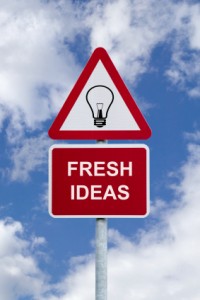What happens when you try to combine a traditional agency with a digital agency – after all this is all the rage right now, as the madison avenue big boys start snapping up the geeks left and right. Integration is the buzzword of the moment, we need to develop the product (and the skillset) to deliver on 360-degree campaigns. But what does this mean in practice? What is the ideal setup for this new hybrid agency? The question of product may be the subject of another article, as the initial challenge here is what really happens when we integrate advertising and digital?
A couple of high profile examples, close to my heart, of this in action.
1) JWT and RMG Connect: Officially activated as of 1 Jan 2010, the RMG Connect (marketing services group) brand was eliminated and the teams became fully functional employees of JWT. A number of senior management from RMG were let go, particularly at HQ in New York, and the teams became part of the traditional agency.
2) Leo Burnett and Arc: At differing times over the last 5 years, the digital elements of the Arc Worldwide group have been merged into the Leo Burnett offering
There are doubtless other larger and smaller examples of this happening up and down Madison Avenue, and then some examples of agencies that are maintaining their offerings – particularly notable Ogilvy & Mather / OgilvyOne, Y&R / Wunderman.
So, why did these integrations take place? What results are they giving, and why are some agencies choosing not to follow suit?

The clear driver behind some of these mergers, within the existing economic climate are to reduce overheads and potentially increase revenue. As we add the digital product to our communications mix we are adding value to what is fast becoming a commoditised product, but this (in my opinion) only works one way. Digital skillsets are increasing the value of the idea merchants by adding execution onto more channels and making the big ideas even bigger by showing how they work online; but how about the digital product itself, is it benefiting from big idea agencies, is it getting access to more clients – these and many more questions remain unanswered for the moment.
Other agencies have chosen to maintain their marketing services brand: Ogilvy is a clear example, although on major clients (eg IBM) the integration already takes place with cross-functional teams. Wundermand & Y&R are both strong brands and there has to date been no noise of removing one or the other, although in certain markets objectives are becoming aligned with joint MDs.
It seems to be too early to tell what the result of these mariages will really be, on the one hand it is bolstering and evolving the product from the traditional agencies, but it may well be leaving a gap in the market for specialised digital and marketing services agencies to move in, After all you don’t call a plumber to fix your electrics!
Post Scriptum
In this digital age, I’m a little concerned about the disappearance of direct marketing as a skillset. We have ‘erased’ a certain number of marketing services agencies to harvest their digital skillset – what has happened to direct marketing?
